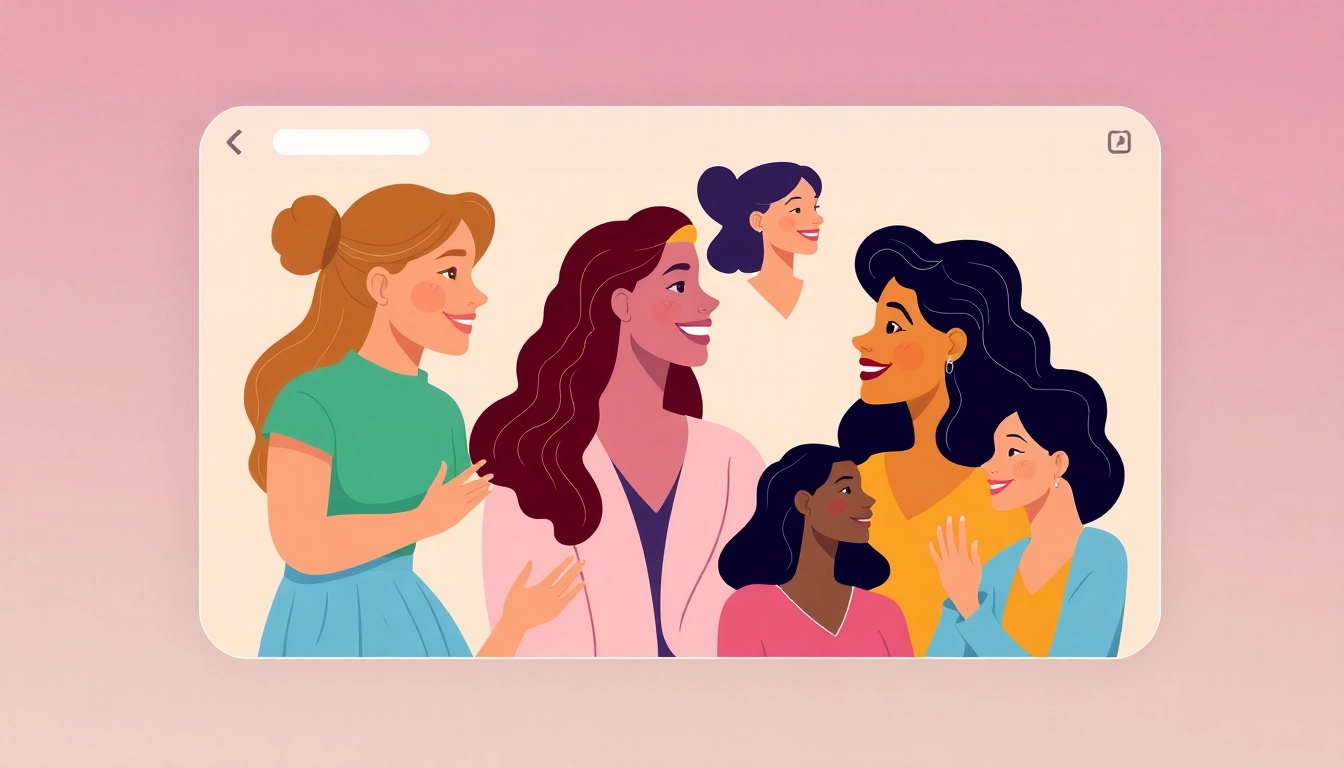The Importance of Communication in Relationships
Communication forms the backbone of any successful relationship. Understanding how to express thoughts, feelings, and emotions can significantly influence the depth and strength of a partnership. Good communication in relationships fosters emotional intimacy, trust, and satisfaction between partners. Miscommunication can lead to misunderstandings, conflict, and even the gradual deterioration of a relationship. To cultivate a healthy partnership, it is essential to explore the dynamics of communication and how they can be effectively managed.
Understanding Communication Dynamics
At its core, communication involves both sending and receiving messages. It’s not just about the words spoken; it encompasses tone of voice, body language, facial expressions, and the context in which the message is delivered. Each of these elements interacts to create the overall meaning of what is being communicated.
Moreover, communication can be classified into verbal and non-verbal types. Verbal communication involves the explicit transmission of messages through spoken or written language, while non-verbal communication may include gestures, eye contact, and other forms of body language that convey meaning without words.
Benefits of Open Communication
Open and honest communication has numerous benefits in relationships. Here are some key advantages:
- Enhances Understanding: Open dialogue aids in clear understanding between partners, reducing the chances of conflict.
- Strengthens Bonds: Sharing thoughts and feelings fosters a deeper emotional connection, enhancing intimacy.
- Facilitates Conflict Resolution: Openly discussing issues helps in addressing conflicts before they escalate.
- Builds Trust: Transparency in communication encourages trust and security within the relationship.
- Encourages Emotional Support: When partners communicate openly, they are more likely to provide each other with the necessary emotional support.
Common Barriers to Effective Communication
Despite the benefits of effective communication, many relationships encounter barriers that hinder open dialogue. Some common barriers include:
- Assumptions: Assuming what a partner is thinking or feeling can lead to miscommunication and misunderstandings.
- Defensiveness: When individuals feel attacked, they may respond defensively rather than engaging in productive dialogue.
- Emotional Reactivity: Strong emotions can cloud judgment and hinder effective communication.
- Lack of Time: Busy lives and hectic schedules can impede chances for meaningful conversations.
- Poor Listening Skills: Effective communication requires active listening, which many people struggle with, resulting in missed signals or meanings.
Key Principles of Communication in Relationships
Active Listening Techniques
Active listening is a vital skill that can dramatically improve communication. Unlike passive listening, where one merely hears the words spoken, active listening involves engaging fully with the speaker. Here are some techniques to cultivate active listening:
- Maintain Eye Contact: This shows the speaker that you are paying attention and valuing their message.
- Reflect Back: Paraphrase or summarize what your partner has said, which demonstrates understanding.
- Avoid Interrupting: Let your partner express their thoughts completely before responding.
- Ask Clarifying Questions: This shows that you are interested in understanding their perspective better.
- Use Non-Verbal Signals: Nodding and body language can indicate attentiveness and compassion.
The Role of Nonverbal Cues
Nonverbal communication plays a crucial role in conveying messages. Body language, facial expressions, and gestures often relay more than words. Understanding nonverbal cues can enhance communication significantly:
- Facial Expressions: A smile can indicate warmth, while crossed arms may suggest defensiveness.
- Posture: Open posture can signal engagement, while slouched posture might indicate disinterest.
- Gestures: Using appropriate gestures can emphasize points and express enthusiasm.
- Proximity: Physical closeness can enhance feelings of intimacy, while distance may imply discomfort.
- Eye Contact: Sustained eye contact can create a sense of connection and trust.
Expressing Needs and Emotions
Clearly expressing needs and emotions is essential for effective communication. Partners need to understand what their significant other requires and how they feel. To communicate needs and emotions effectively, consider the following strategies:
- Use “I” Statements: This allows individuals to express feelings without sounding accusatory. For instance, say “I feel sad when…” instead of “You always make me sad.”
- Be Specific: Vague statements can lead to misunderstandings. Clearly outline what you need or feel.
- Emphasize Your Feelings: Expressing emotions helps partners understand the impact of their actions.
- Practice Vulnerability: Being open about fears and insecurities can strengthen emotional connections.
Strategies to Improve Communication in Relationships
Constructive Conflict Resolution
Conflict is a natural part of any relationship, but how it is managed can determine the outcome. Employing constructive conflict resolution techniques is key:
- Stay Calm: Keep emotions in check during discussions to avoid escalation.
- Focus on the Issue: Address the specific problem rather than attacking each other personally.
- Time-Outs: If discussions become heated, take a break to regain composure before continuing.
- Seek Compromise: Aim to find a middle ground rather than insisting on being entirely right.
- Follow Up: After resolving a conflict, revisit the issue in a positive light to ensure mutual understanding.
Using Open-Ended Questions
Open-ended questions encourage deeper conversation and reflection, moving beyond yes/no responses. Examples include:
- “What do you think about…?”
- “How did that make you feel?”
- “Can you tell me more about…?”
- “What do you need from me?”
- “How can we improve this situation?”
Building Empathy Through Dialogue
Empathy is essential for nurturing understanding and compassion in relationships. Engaging in empathetic dialogue includes:
- Validating Feelings: Acknowledge your partner’s feelings, even if you don’t share the same perspective.
- Putting Yourself in Their Shoes: Try to see situations from your partner’s viewpoint to foster understanding.
- Ask for Feedback: Invite your partner to express how they feel about your thoughts and responses.
- Be Patient: Empathy takes time; allow for gradual progress in developing this skill.
Recognizing Signs of Poor Communication
Identifying Negative Patterns
Acknowledging signs of poor communication is crucial for addressing and resolving issues early. Some signs may include:
- Frequent Misunderstandings: Consistently misinterpreting messages can indicate underlying communication problems.
- Increased Arguments: A rise in frequent arguments may signal unresolved communication issues.
- Avoidance: If partners are avoiding conflicts or discussions, it reflects poor communication.
- Emotional Distancing: Partners may become emotionally distant as a result of poor communication habits.
Understanding the Impact of Poor Communication
Poor communication can lead to numerous consequences in relationships, including:
- Emotional Disconnect: Lack of communication can create distance and isolation.
- Resentment Building: Unresolved issues and poor expressions of feelings can lead to pending resentment.
- Fragile Trust: Trust can be eroded if partners feel unheard or misunderstood.
- Increased Anxiety: Anxiety and stress can build up from the fear of conflicts, leading to a cycle of avoidance.
Seeking Professional Help When Necessary
If communication problems persist, seeking professional help can be beneficial. Couples’ therapy or relationship counseling provides a safe space to address issues and develop communication strategies. A trained professional can offer guidance, facilitate discussions, and teach effective communication techniques.
Long-Term Benefits of Effective Communication in Relationships
Enhancing Emotional Intimacy
Effective communication fosters emotional intimacy by allowing partners to share vulnerabilities openly. This exchange deepens the emotional bonds and ensures both partners feel valued and understood.
Fostering Trust and Safety
Establishing trust in a relationship relies heavily on communication. Transparent communication cultivates a safe space for both partners to express themselves without fear of judgment, resulting in a strong, trusting partnership.
Building a Lasting Partnership
Overall, effective communication is a critical component of a lasting partnership. By prioritizing clear, empathetic, and constructive dialogue, couples can navigate challenges and celebrate successes together. The commitment to improving communication in relationships ultimately leads to a more fulfilling and sustainable bond built on mutual understanding, respect, and love.



